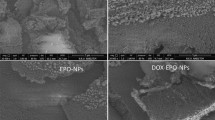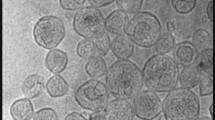Abstract
Inducing apoptosis in cancer cells is an effective strategy for cancer therapy. The cationic α-helix forming KLAKLAKKLAKLAK peptide (KLAK) has been known to induce apoptosis by disrupting the mitochondria. In the present study, we have designed a thermally targeted KLAK peptide by genetically engineering the KLAK sequence to the carboxy terminus of the heat responsive biopolymer elastin-like polypeptide (ELP). The cellular internalization of ELP-KLAK was made possible by engineering a cell penetrating peptide sequence (SynB1) to the amino terminus of ELP. The SynB1-ELP1-KLAK fusion polypeptide was cytotoxic against both estrogen receptor positive and negative human breast cancer cell lines. The potency of SynB1-ELP1-KLAK was further enhanced when mild hyperthermia was added to the treatment. In response to hyperthermia, SynB1-ELP1-KLAK selectively triggered apoptosis, which was associated with disruption of the mitochondria. The thermally responsive SynB1-ELP-KLAK polypeptide can have improved tumor targeting by the application of mild hyperthermia. Furthermore, the pharmacokinetic properties of ELP can prevent degradation of KLAK in vivo, and the use of SynB1 can mediate tumor cell uptake, thereby augmenting the effect of KLAK.





Similar content being viewed by others
References
Bidwell GL III, Raucher D (2005) Application of thermally responsive polypeptides directed against c-Myc transcriptional function for cancer therapy. Mol Cancer Ther 4(7):1076–1085
Bidwell GL III, Raucher D (2010) Cell penetrating elastin-like polypeptides for therapeutic peptide delivery. Adv Drug Deliv Rev 62(15):1486–1496
Bidwell GL III, Davis AN et al (2007a) A thermally targeted elastin-like polypeptide-doxorubicin conjugate overcomes drug resistance. Invest New Drugs 25(4):313–326
Bidwell GL III, Fokt I et al (2007b) Development of elastin-like polypeptide for thermally targeted delivery of doxorubicin. Biochem Pharmacol 73(5):620–631
Bidwell GL III, Davis AN et al (2009) Targeting a c-Myc inhibitory polypeptide to specific intracellular compartments using cell penetrating peptides. J Control Release 135(1):2–10
Bidwell GL 3rd, Whittom AA et al (2010) A thermally targeted peptide inhibitor of symmetrical dimethylation inhibits cancer-cell proliferation. Peptides 31(5):834–841
Chilkoti A, Dreher MR et al (2002) Design of thermally responsive, recombinant polypeptide carriers for targeted drug delivery. Adv Drug Deliv Rev 54(8):1093–1111
Dewhirst MW, Prosnitz L et al (1997) Hyperthermic treatment of malignant diseases: current status and a view toward the future. Semin Oncol 24(6):616–625
Dreher MR, Raucher D et al (2003) Evaluation of an elastin-like polypeptide-doxorubicin conjugate for cancer therapy. J Control Release 91(1–2):31–43
Ellerby HM, Arap W et al (1999) Anti-cancer activity of targeted pro-apoptotic peptides. Nat Med 5(9):1032–1038
Falk MH, Issels RD (2001) Hyperthermia in oncology. Int J Hyperthermia 17(1):1–18
Fantin VR, Berardi MJ et al (2005) A bifunctional targeted peptide that blocks HER-2 tyrosine kinase and disables mitochondrial function in HER-2-positive carcinoma cells. Cancer Res 65(15):6891–6900
Furgeson DY, Dreher MR et al (2006) Structural optimization of a “smart” doxorubicin-polypeptide conjugate for thermally targeted delivery to solid tumors. J Control Release 110(2):362–369
Hed J, Hallden G et al (1987) The use of fluorescence quenching in flow cytofluorometry to measure the attachment and ingestion phases in phagocytosis in peripheral blood without prior cell separation. J Immunol Methods 101(1):119–125
Javadpour MM, Juban MM et al (1996) De novo antimicrobial peptides with low mammalian cell toxicity. J Med Chem 39(16):3107–3113
Kwon MK, Nam JO et al (2008) Antitumor effect of a transducible fusogenic peptide releasing multiple proapoptotic peptides by caspase-3. Mol Cancer Ther 7(6):1514–1522
Liu W, Dreher MR et al (2006) Tumor accumulation, degradation and pharmacokinetics of elastin-like polypeptides in nude mice. J Control Release 116(2):170–178
MacEwan SR, Chilkoti A (2010) Elastin-like polypeptides: biomedical applications of tunable biopolymers. Biopolymers 94(1):60–77
MacKay JA, Chen M et al (2009) Self-assembling chimeric polypeptide-doxorubicin conjugate nanoparticles that abolish tumours after a single injection. Nat Mater 8(12):993–999
Maeda H, Seymour LW et al (1992) Conjugates of anticancer agents and polymers: advantages of macromolecular therapeutics in vivo. Bioconjug Chem 3(5):351–362
Mai JC, Mi Z et al (2001) A proapoptotic peptide for the treatment of solid tumors. Cancer Res 61(21):7709–7712
Massodi I, Thomas E et al (2009) Application of thermally responsive elastin-like polypeptide fused to a lactoferrin-derived peptide for treatment of pancreatic cancer. Molecules 14(6):1999–2015
Massodi I, Moktan S et al (2010) Inhibition of ovarian cancer cell proliferation by a cell cycle inhibitory peptide fused to a thermally responsive polypeptide carrier. Int J Cancer 126(2):533–544
Meyer DE, Chilkoti A (1999) Purification of recombinant proteins by fusion with thermally responsive polypeptides. Nat Biotechnol 17:1112–1115
Moktan S, Ryppa C et al (2010) A thermally responsive biopolymer conjugated to an acid-sensitive derivative of paclitaxel stabilizes microtubules, arrests cell cycle, and induces apoptosis. Invest New Drugs 30(1):236–248
Raucher D, Chilkoti A (2001) Enhanced uptake of a thermally responsive polypeptide by tumor cells in response to its hyperthermia-mediated phase transition. Cancer Res 61(19):7163–7170
Raucher D, Massodi I et al (2008) Thermally targeted delivery of chemotherapeutics and anti-cancer peptides by elastin-like polypeptide. Expert Opin Drug Deliv 5(3):353–369
Raucher D, Moktan S et al (2009) Therapeutic peptides for cancer therapy. Part II—cell cycle inhibitory peptides and apoptosis-inducing peptides. Expert Opin Drug Deliv 6(10):1049–1064
Rege K, Patel SJ et al (2007) Amphipathic peptide-based fusion peptides and immunoconjugates for the targeted ablation of prostate cancer cells. Cancer Res 67(13):6368–6375
Rousselle C, Clair P et al (2000) New advances in the transport of doxorubicin through the blood–brain barrier by a peptide vector-mediated strategy. Mol Pharmacol 57(4):679–686
Standley SM, Toft DJ et al (2010) Induction of cancer cell death by self-assembling nanostructures incorporating a cytotoxic peptide. Cancer Res 70(8):3020–3026
Takahashi I, Emi Y et al (2002) Clinical application of hyperthermia combined with anticancer drugs for the treatment of solid tumors. Surgery 131(1):S78–S84
Yamaoka T, Tamura T et al (2003) Mechanism for the phase transition of a genetically engineered elastin model peptide (VPGIG)40 in aqueous solution. Biomacromolecules 4(6):1680–1685
Acknowledgments
This work was supported by grants from the National Science Foundation (CBET-0931041) and National Institute of Health (1R21CA137418-01A2 and 1R21CA139589-01). We would like to thank Ms. Rebecca Singleterry for technical assistance.
Author information
Authors and Affiliations
Corresponding author
Rights and permissions
About this article
Cite this article
Moktan, S., Raucher, D. Anticancer Activity of Proapoptotic Peptides is Highly Improved by Thermal Targeting using Elastin-like Polypeptides. Int J Pept Res Ther 18, 227–237 (2012). https://doi.org/10.1007/s10989-012-9295-y
Accepted:
Published:
Issue Date:
DOI: https://doi.org/10.1007/s10989-012-9295-y




